Choosing the Best Material for a Marble Racing Track
Choosing the correct material for a marble racing track can radically change the racing experience. The ideal substance increases marble speed, ensures fair competition, and amps up the excitement of each race. From flawless plastic to unexpected sand, the track surface directly impacts every thrilling moment of race day.
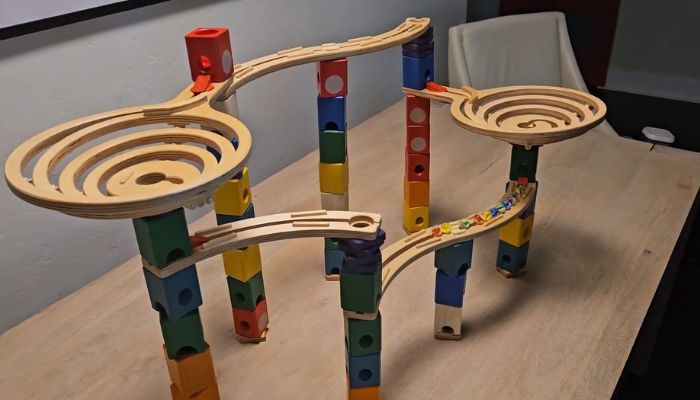
Key factors to consider
Making the perfect decision when choosing materials for your marble racing track can dramatically increase your racing thrill and overall enjoyment. Let’s examine some important aspects that influence your marble racing experience.
Surface smoothness
Think about how long you want your track to endure. Hardwood, acrylic, and robust polymers are designed to withstand multiple races without substantial wear and tear. However, for temporary or more adaptable layouts, cardboard, foam board, or sand-based tracks are more straightforward to construct and reconfigure. They will not last years of heavy use but are ideal if you value versatility and frequent configuration changes.
Durability
Think about how long you want your track to endure. Hardwood, acrylic, and robust polymers are designed to withstand multiple races without substantial wear and tear. However, for temporary or more adaptable layouts, cardboard, foam board, or sand-based tracks are more straightforward to construct and reconfigure. They will not last years of heavy use but are ideal if you value versatility and frequent configuration changes.
Versatility
Some materials encourage inventiveness and diverse track configurations. Modular plastic parts provide limitless configuration options, making track modifications quick and simple.
Wood and foam boards allow precise, customizable designs, including intricate ramps, loops, and precision curves. If unpredictability appeals to you, courses provide unlimited changes with each new race—ideal for spontaneous, dynamic competitions.
Compare popular materials
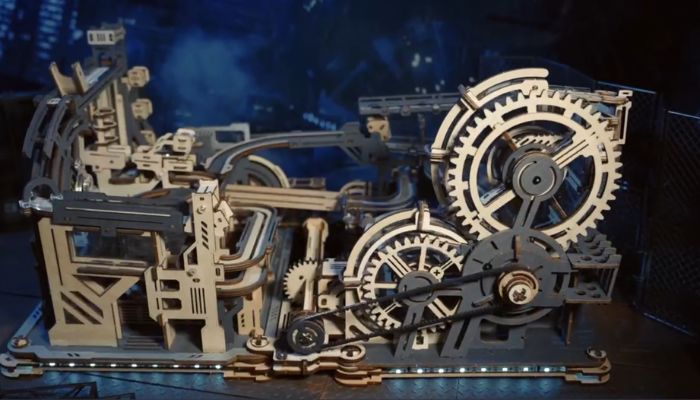
Plastic
Plastic is a common choice for marble tracks because it provides a smooth and consistent performance. These artificial tracks are lightweight, inexpensive, and easy to install, making them ideal for novices and young racers.
Their uniform surface allows marbles to roll fast and with minimal friction, making them perfect for competitive racing and timed competitions. However, plastic tracks might bend significantly, necessitating careful support for extended configurations.
Wood
If you want longevity and precision, wooden tracks are ideal. Wood gives stability and a firm grip, allowing marbles to easily manage tight turns and steep slopes. Wooden surfaces strike a mix of friction and speed, providing superior control in races with complex layouts and precise obstacles.
While wood is more expensive and heavier, it is durable and ideal for long-term use.
Cardboard
Cardboard is the ultimate DIY and creative tool. It is highly configurable and ideal for creating unique courses with loops, tunnels, and ramps. It is inexpensive and widely available, but durability is its biggest disadvantage—cardboard tracks can distort or wear quickly, especially with repeated usage. Nonetheless, it’s an excellent choice for trying out new designs or running informal races.
Metal
Serious racers frequently favor metal because of its extraordinarily smooth and frictionless surface. Marbles move at tremendous speeds, so metal tracks are ideal for professional or competitive marble racing leagues.
Metal tracks are also highly robust and straightforward to repair, but they are costly and heavy. Metal is unrivaled among racers seeking maximum speed and premium performance.
Sand tracks
Sand track offers a unique marble racing experience—natural, unpredictable, and exhilarating. Every run is unique; marbles cut new courses and navigate altering terrain. It’s great for those who enjoy exciting, impromptu races full of surprises and obstacles.
DIY vs. Commercial Tracks
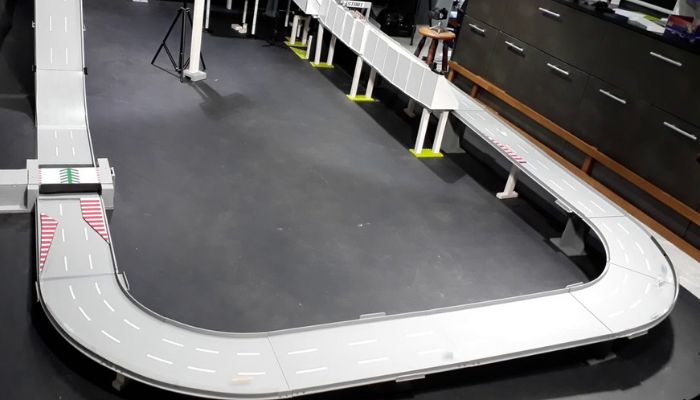
When choosing between DIY and commercial tracks, consider convenience, originality, and price. Both alternatives have significant advantages depending on your goals, experience level, and desired customization.
Pre-made Modular Track Sets
Modular tracks provide an out-of-box racing experience. They’re quick to set up, simple to alter, and engineered to ensure fair and consistent racing every time. Commercial kits are the best option if you want to get right into racing or want reliability without the effort.
Homemade DIY Setups
DIY tracks allow you to let your imagination run wild! With materials such as cardboard, wood, or everyday household items, you have complete control over track design, length, and obstacles. DIY is ideal for budget-conscious racers or those who want the challenge of creating something on their own.
Recommend materials for different racing styles
Every racing style necessitates certain materials to increase excitement and performance. Here are the best choices adapted for various marble racing formats:

Best Material for High-Speed Marble Races
Nothing beats smooth plastic or polished metal tracks when sheer speed is desired. Plastic tracks offer a slick, uniform surface that ensures optimal acceleration and velocity.
With their ultra-smooth finish, metal tracks significantly reduce friction—ideal for marbles that desire speed. Both alternatives perform well in straightaways, loops, and high-speed courses.
Ideal Materials for Challenging Obstacle Courses
Versatility and durability are most important on obstacle-packed tracks with jumps, ramps, spinning gates, and funnels. Wood and durable plastic provide exceptional grip and stability, making them ideal for precision navigation over tight curves or challenging obstacles.
Marbles can successfully navigate ramps because of the friction of wood, and high-quality plastic allows for the integration of numerous obstacles. With their inherent irregularities and shifting surfaces, sand tracks can add to the challenge and make it more unpredictable.
Top Materials for Precision and Technical Racing
Precision races rely on meticulously planned layouts, tricky turns, and perfect marble control. Wooden tracks, famed for their longevity and dependable grip, enable racers to maintain precise lines through complex configurations.
Similarly, customizable cardboard configurations are easily fine-tuned, allowing for precise adjustments to curves and slopes. Both alternatives offer technical refinement, ideal for racers who value exquisite craftsmanship and accuracy in their marble runs.
Tips to Enhance Your Marble Racing Track Material
Even the most excellent materials benefit from some extra attention and fine-tuning. Here’s how to optimize your track for maximum performance:
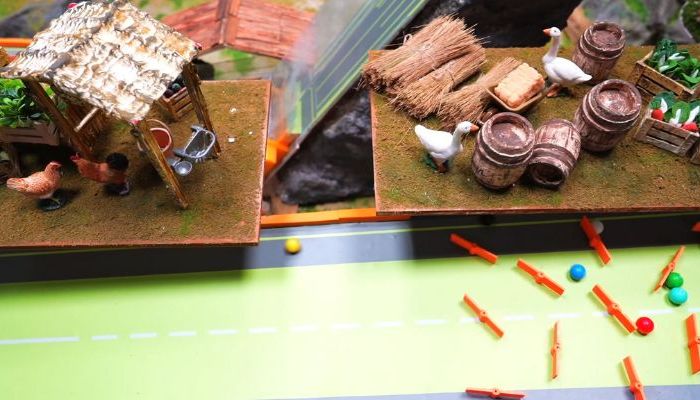
Techniques for Smoothing and Optimizing Surfaces
To ensure optimal marble speed, examine your track regularly for faults or rough spots. Sand wooden surfaces lightly with fine-grit sandpaper to keep them smooth. Use a silicone-based lubricant sparingly for plastic tracks to keep marbles moving smoothly. If you’re using cardboard, strengthen and seal the edges using transparent tape to prevent friction and preserve structural integrity.
Maintenance Tips to Prolong Material Lifespan
Proper storage is essential—store your tracks in a dry, cold location to avoid warping or degradation. To ensure optimal marble traction, wipe the tracks regularly with microfiber towels to eliminate dust and debris. To keep the speed-enhancing sheen of metal tracks, polish them periodically. Consistent, moderate maintenance increases the life of your track, allowing for countless exhilarating races in the future!
Where to find the best materials
Choosing reputable vendors guarantees that your track is designed for long-term excitement. For professional-grade setups, reputable brands like Quercetti, Hape, and Ravensburger provide high-quality plastic and hardwood modular tracks. Local hardware and hobby stores are excellent sources of durable wood, smooth metal sheets, and finishing equipment.
Repurpose everyday things such as cardboard boxes, plastic tubing, and wooden boards to create cost-effective DIY projects. For inexpensive materials and one-of-a-kind accessories, shop at craft stores or online markets such as Etsy or Amazon. Always read reviews to assure quality and performance, and keep your marble races exciting, fair, and quick!
FAQ about best material for a marble racing track
Is wood better than plastic for marble racing?
Wood offers more control and durability, while plastic is faster and easier to assemble.
What is the best angle for a marble run?
Between 10–30 degrees—enough to maintain momentum without making it too fast.
Can cardboard be used for marble tracks?
Yes, it's great for DIY, but it's not as durable as wood or plastic.

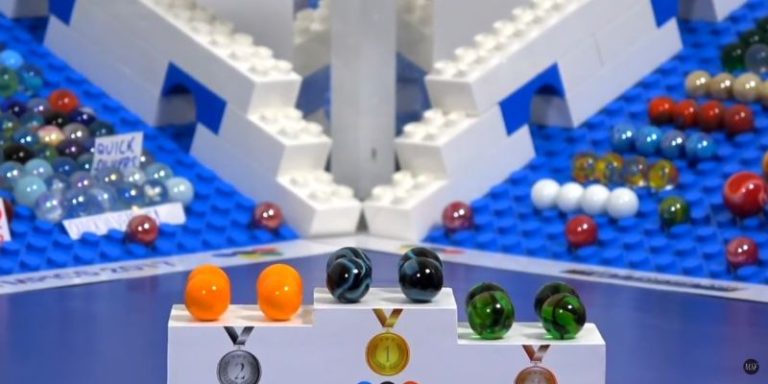
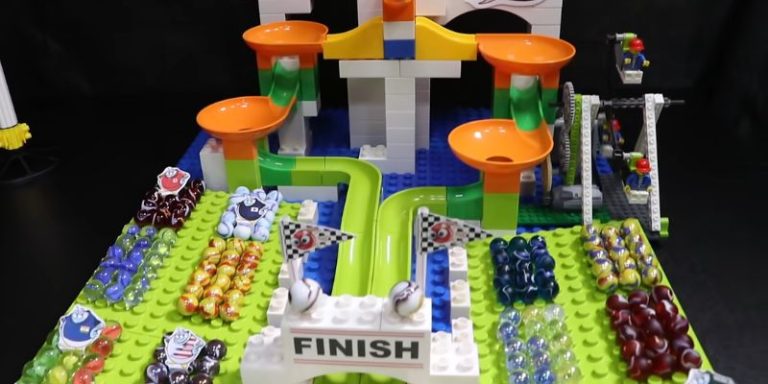
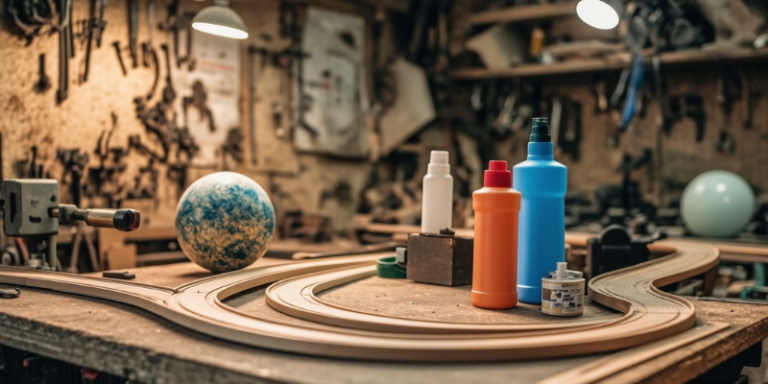
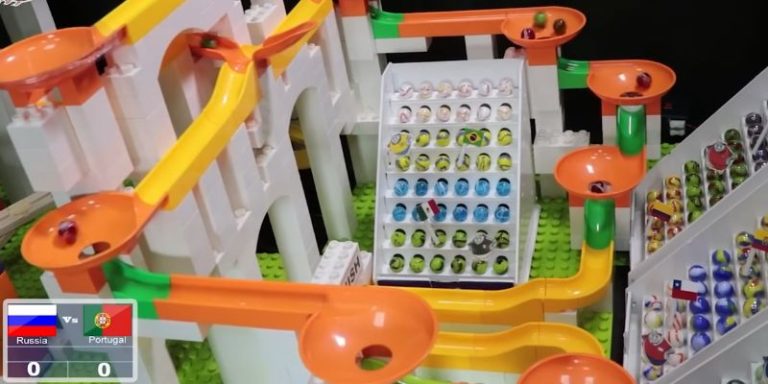
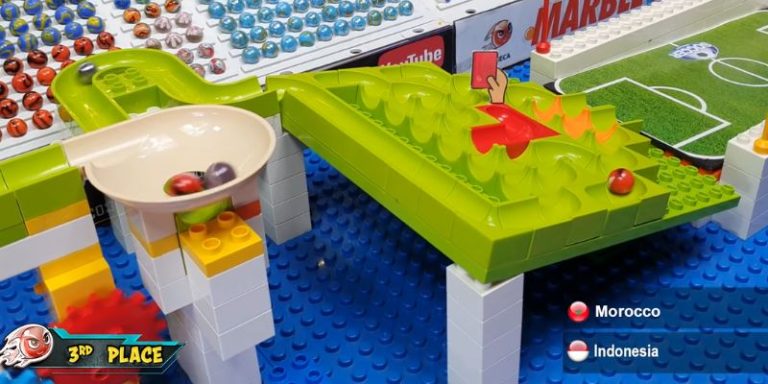
One Comment